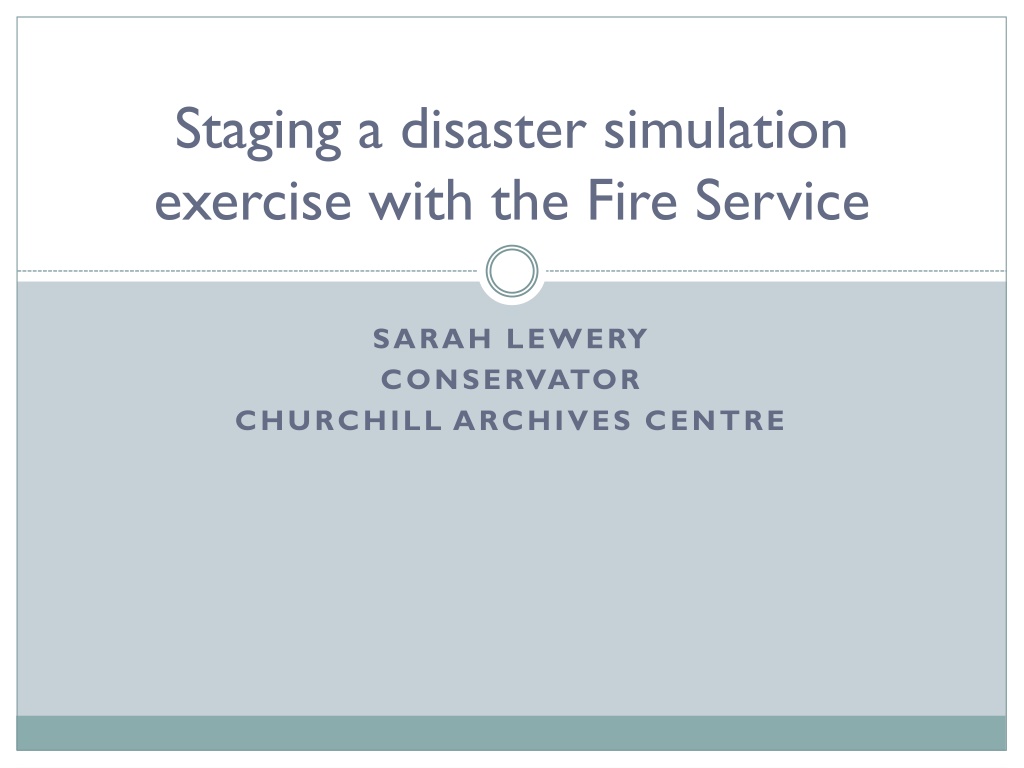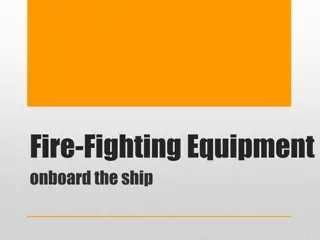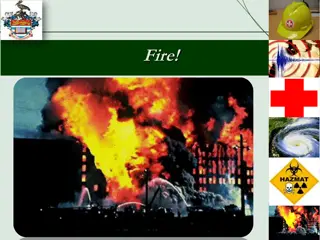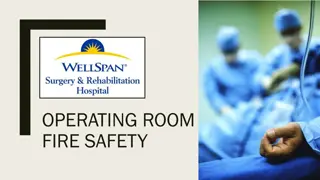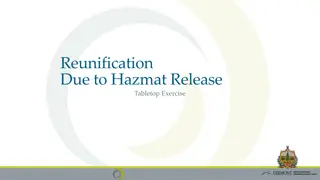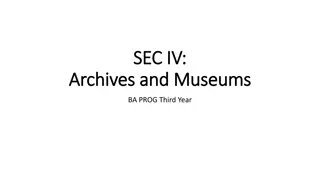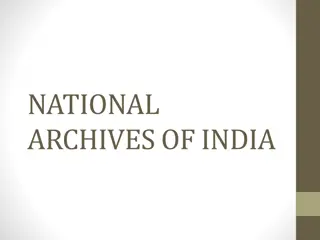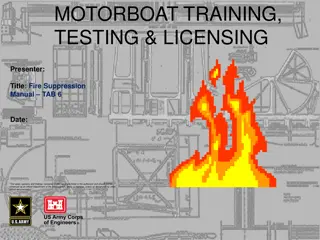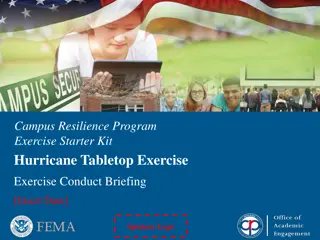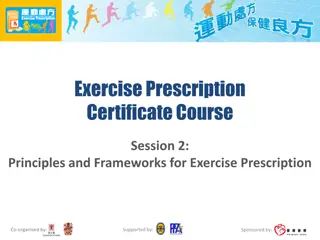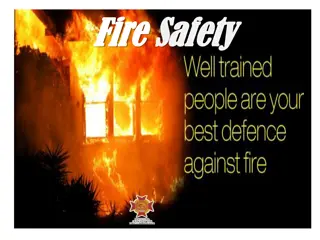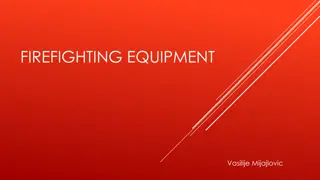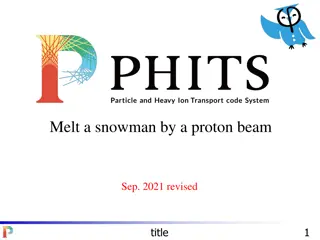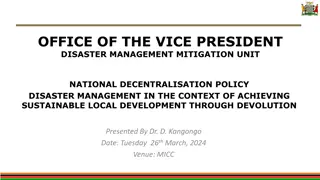Disaster Simulation Exercise with the Fire Service at Churchill Archives Centre
Disaster simulation exercises were conducted at Churchill Archives Centre to test the Disaster Contingency Plan. Lessons were learned from previous exercises, leading to improvements in procedures and equipment. Preparation included consultation with the Fire Service and a detailed risk assessment. The scenario involved a simulated fire incident in a storage area, testing response capabilities and coordination with emergency services.
Download Presentation

Please find below an Image/Link to download the presentation.
The content on the website is provided AS IS for your information and personal use only. It may not be sold, licensed, or shared on other websites without obtaining consent from the author. Download presentation by click this link. If you encounter any issues during the download, it is possible that the publisher has removed the file from their server.
E N D
Presentation Transcript
Staging a disaster simulation exercise with the Fire Service SARAH LEWERY CONSERVATOR CHURCHILL ARCHIVES CENTRE
Testing our Disaster Contingency Plan Churchill Archives Centre has regular staff training but there is a need to test the Plan periodically First one 2007 Second one 2015 Exercise Winston
Lessons learnt 2007 The Disaster supplies cupboard was in the wrong place, being in another part of the same building as the incident. Since re-located There was some confusion over keys provided by the duty porters completely full set now stored with the porters The Fire service (in the dark and with breathing apparatus on) needed extra guidance on which were our priority shelves. We have now clarified this by better labelling of bays. Fire Service noted the importance of fluorescent vests to identify Archives Centre Incident managers with whom they should be communicating. On the advice of the Fire Service, we purchased face masks (as well as gloves) for the salvage team (in event of smoke damage) and better, heavy duty gloves for our disaster supplies cupboard. It was incredibly tiring for the salvage team moving c.200 boxes through college to the operation area, while wearing masks! This illustrated the importance of breaks.
The Fire Service testing their salvage capability The Cambridgeshire Fire and Rescue Service were looking particularly at their salvage capability and wanted to organise a salvage exercise, involving 4 - 6 fire appliances.
Exercise Winston - the scenario The scenario we d agreed ahead with the Fire Service was that there had been a fire in our storage area that had been put out by our gas fire suppression system, but there was damage to the roof and the room was filled with smoke. It was also out-of-hours, so everything was securely locked up and alarmed as normal and it was a cold, dark winter s night in February.
Preparation Consulted extensively with Fire Service and carried out risk assessment for the event. We had prepared 280 filled dummy priority boxes (many heavy) and temporarily updated the Disaster Contingency Plan with this information Stationed a staff member within the dark, locked, alarmed storage area to remain there during the whole operation to ensure only the correct boxes were taken out. But not to be involved unless absolutely necessary!
Exercise Winston 7pm on a Tuesday evening in February 2015 College life going on a normal, including students using the library (same building as the Archives) Certain key staff aware but the porters on duty had no idea that this was a drill and so responded as if it were a real incident, assisting the five fire crews, from different regions, as they arrived in their vehicles a few minutes later, and calling out Archives Centre staff. The four senior members of the staff who would act as the incident managers in a real event, were involved.
Practising the Archives Centre Disaster Plan We wanted to test the incident assessment and reaction of our management team And also the reaction of the first responders duty porters.
The Salvage For the fire crew commanders, this was a carefully planned training event involving crews from Cambridge, St Neots, Gamlingay, Linton and Royston. It tested their ability and co-ordination in assessing the situation, stabilising it and evacuating the priority material identified in the Archive Centre s Disaster Contingency Plan. The priority boxes had to be moved by the fire-fighters, wearing heavy breathing apparatus, to a secure area while keeping them safe at all times.
The crews set up a protected, covered area outside the building to take the material to before moving it to another building.
While this was going on, another crew were using long ladders to access the roof in order to cover it with heavy duty sheeting to protect the storage area from the elements.
Inside the store, other fire-fighters were sheeting up the shelving directly underneath the hole in the roof to protect the archives still in the room.
Assisting the salvage We looked on, offering advice and help to the crews to enable access to the secure areas and identification of the priority collection. We prepared the temporary storage area identified in our Plan, using equipment and materials stockpiled in our emergency disaster supplies cupboard.
The end of the exercise Nearly two and a half hours later, the fire crews had stabilised the areas and moved the priority material to the temporary storage area. They were exhausted and we were high on adrenaline! The College had arranged for refreshments to be laid on in the buttery for anyone that needed them at any point throughout the exercise. A few of the fire-fighters took a well earned cuppa at the end of the exercise and all seemed to have had a fruitful and even enjoyable time.
Outcomes We decided that it would be useful to add a laminated front sheet to our Disaster Contingency Plan held in the Porters Lodge for use by the Fire Service The main problem encountered was the Fire Road
